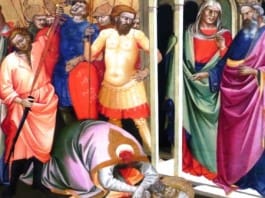
We have little definite information about Pope Saint Caius. It was said that he was a relative of the Emperor Diocletian and was also an uncle of an unidentified holy Susanna. He also made up the final structure of the lower orders. The information is not verifiable, but seems to maybe preclude his martyrdom, because – on the threshold of Peter from 283 to 296 – he died before the Diocletian persecution was unleashed.
Legend has it that Caius was born in the Dalmatian city of Salona (nda: Solin is about 5 km NE of Split), to a noble family related to the Roman emperor Diocletian.
Pope Caius was consecrated on December 17, 283. However, during his pontificate, the anti-repression was much attenuated. There were concessions for the construction of new churches and the expansion of cemeteries.
At the same time, on the home front, heresies multiplied. The last in chronological order was that of “Mitra” (nda: manicheistic type of heresy, of Asian origin, for which God assumed the heavenly contrast of light and of darkness).
His remains were first placed in the cemetery of San Callisto, in 1631, in what was his house in Rome, which then became a church. In 1880, when the church was demolished to build the Ministry of War, in via XX settembre, his relics were transferred to the chapel of the Barberini family.
Photo credit: Public Domain via Wikimedia Commons
The post Pope Saint Caius appeared first on uCatholic.
Daily Reading
Memorial of Saints Joachim and Anne, Parents of the Blessed Virgin Mary
Readings for the Memorial of Saints Joachim and Anne, parents of the Blessed Virgin Mary Reading 1 JER 3:14-17 Return, rebellious children, says the LORD, for I am your Master;…
Daily Meditation
How to Be Good Soil
Click here for daily readings Jesus is the divine Sower who sows the seed of his word in the community of followers that he calls apart from the world. The…




